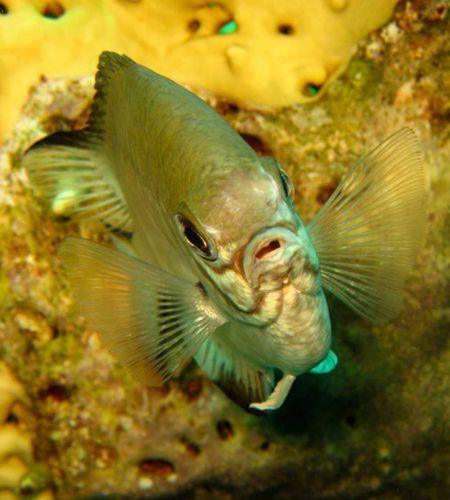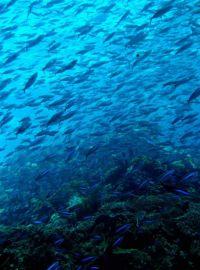 Scuba diving in Phuket doesn’t actually take place very near to Phuket itself, but most divers can be based there in hotels, resorts and even guesthouses. From the island of Phuket, dive centres’ day-trip diving boats have a choice of directions to go in, the most popular two being south to Racha Yai & Racha Noi (also spelled Raja or Raya) and east towards Koh Phi Phi. The Racha Islands have some good scuba diving opportunities, but the four great dive spots east of Phuket are where most divers are taken.
Scuba diving in Phuket doesn’t actually take place very near to Phuket itself, but most divers can be based there in hotels, resorts and even guesthouses. From the island of Phuket, dive centres’ day-trip diving boats have a choice of directions to go in, the most popular two being south to Racha Yai & Racha Noi (also spelled Raja or Raya) and east towards Koh Phi Phi. The Racha Islands have some good scuba diving opportunities, but the four great dive spots east of Phuket are where most divers are taken.
King Cruiser Wreck is a large car ferry which sank under suspicious circumstances in 1997. It was on its way to Koh Phi Phi when it hit the undersea mount known as Anemone Reef, causing the boat’s hull to crack open and bring the whole vessel to the bottom of the sea. While the motives and reasons for this accident are subject to all kinds of rumours, it is of no consequence to divers who visit. There were no fatalities, so anyone diving King Cruiser Wreck has no need to feel that they’re enjoying the location and reason for anyone’s death. To be honest, King Cruiser Wreck’s best years are in the past. Deterioration has become quite rapid and parts of the reef that were once fun and safe are now close to dangerous. Its shallowest point was once at a depth of 12m but that has now changed to around 18m. However, it’s still hugely popular with divers as well as marine life. Lots of small and medium species live there, and every day plenty of larger and pelagic fish stop off for a visit. This wreck is nearly always busy.
 Anemone Reef is right next to King Cruiser Wreck, basically because the ferry hitting the reef was what caused the sinking, and the ferry didn’t go very much further before slowly sinking to the bottom of the sea. The close proximity of the two dive sites enables last-minute decisions to be easily made, for example if one is too crowded the other can be dived. It’s also common for day trip boats to moor up for both dives of the day, especially if the conditions are good. Anemone Reef is a great dive site, although its depths reach 30m. it can be enjoyed by a boatful of divers with different certification levels and amounts of experience. Its name comes from the thousands of anemones which cover the underwater pinnacle. Of course, these anemones are home, shelter and a source of food for hundreds of different species of fish, invertebrates and even the odd reptile. On a good day, Anemone Reef can claim to be the best dive site of all those around Phuket and Phi Phi.
Anemone Reef is right next to King Cruiser Wreck, basically because the ferry hitting the reef was what caused the sinking, and the ferry didn’t go very much further before slowly sinking to the bottom of the sea. The close proximity of the two dive sites enables last-minute decisions to be easily made, for example if one is too crowded the other can be dived. It’s also common for day trip boats to moor up for both dives of the day, especially if the conditions are good. Anemone Reef is a great dive site, although its depths reach 30m. it can be enjoyed by a boatful of divers with different certification levels and amounts of experience. Its name comes from the thousands of anemones which cover the underwater pinnacle. Of course, these anemones are home, shelter and a source of food for hundreds of different species of fish, invertebrates and even the odd reptile. On a good day, Anemone Reef can claim to be the best dive site of all those around Phuket and Phi Phi.
Koh Doc Mai is quite similar to Anemone Reef in that it is a nice dive site between Phuket and Phi Phi. Unlike Anemone Reef, Koh Doc Mai is actually an island, albeit an uninhabited one. Its name translates to flower island, and the reason for this is disputed. Whatever the reason, this is a wonderful dive site that has lots of natural colour under the surface of crystal-clear water. The island is made of limestone and sticks out of the water but cannot be walked on. Underneath the gently-lapping waves, three sides of the island are vertical walls which descend to 30m. The fourth side slopes away to the west. Lots of reef fish live here, including the occasional octopus and other interesting invertebrates. On most diving days, Koh Doc Mai is a consistently-good dive site, and often not as crowded as others in the area. It is well worth a visit.
Shark Point gets its name for obvious reasons, but coming to dive here is not only about the chance of seeing some sharks. In fact, there’s a lot more of interest under the water at what is commonly regarded as Phuket best diving site. The underwater topography is made up of three pinnacles one of which just about breaks the surface of the sea. Although not really suitable for those diving for the first time, Open Water fun divers and above can enjoy a great time here. In fact, the dive site is so large and interesting, it’s possible to dive here time and time again, and still not manage to see everything. There are obviously the sharks, which are Leopard / Zebra Sharks (Stegostoma fasciatum), but there’s so much more. Moray Eels, dozens of species of marine fish, and even reptiles such as turtle and sea snakes are commonly seen here. The dive site is a little exposed, so surface waves and currents need to be taken into consideration at times, but there’s rarely a day when a good dive can’t be had at Shark Point.


